When Do Bears Hibernate? The Answer May Surprise You…
From the very earliest of our memories, we’re taught that bears hibernate all winter long. I remember how horrified I was at the thought of a 5-month nap as a child. Of course, as an adult trying desperately to maintain a healthy work-life balance, the idea sparks a certain level of interest!
But when do bears actually hibernate? Is it really one long, deep slumber that starts with the first snow and lasts to the first signs of green peeking through the remnants of snow? Is it as simple as we used to imagine it?
When it comes to winter adventures in bear country, the thought that bears could sleep through your visit is comforting. The truth of the matter, however, is a little more complicated than that.
Let’s take a look at the reality of bear hibernation behavior and how it can play into your winter plans.
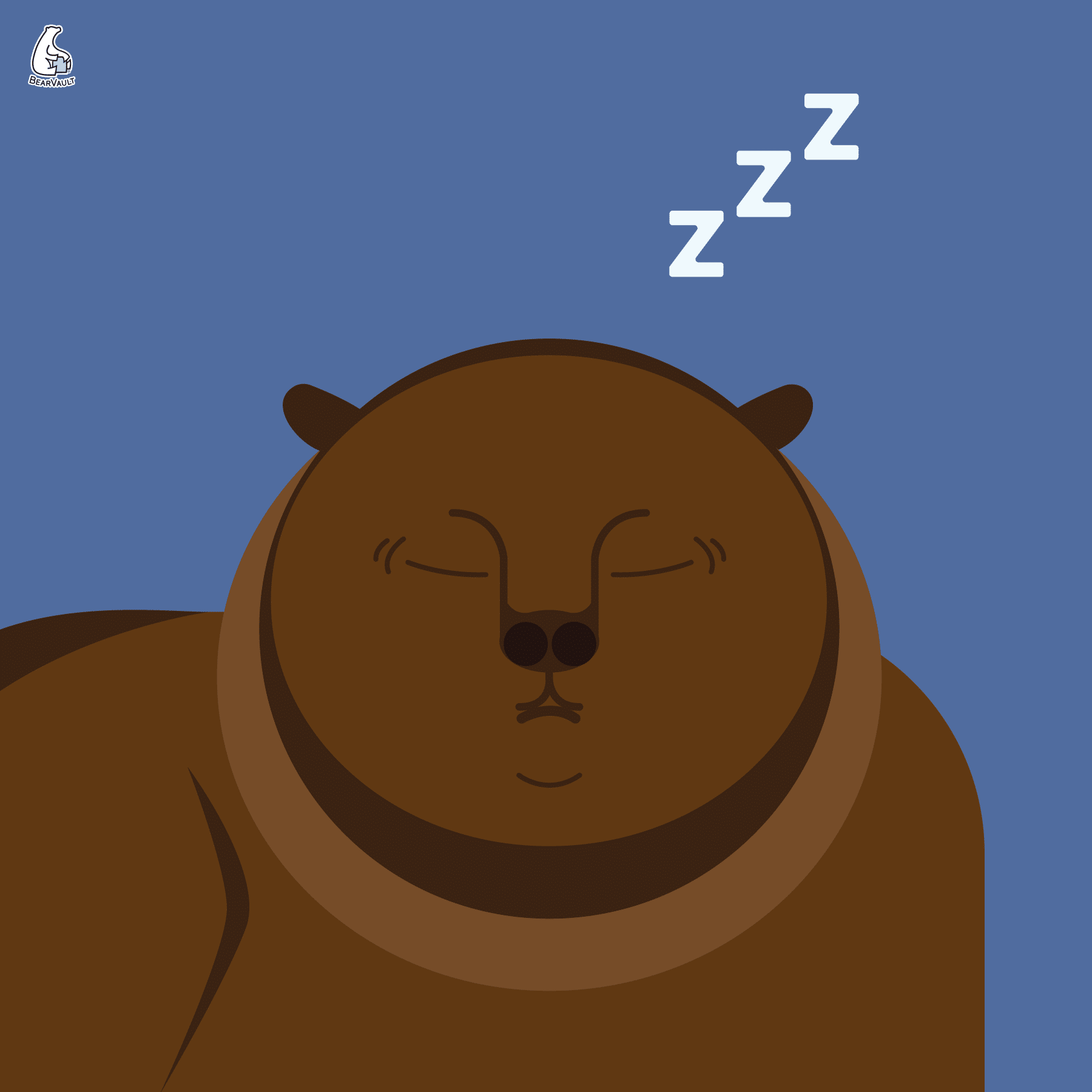
Do All Bears Hibernate?
The short answer is “Yes”. All types of bears hibernate to a certain extent! The longer answer will give you some caveats and better information though…
Bears aren’t even alone in their habit of snoozing away large chunks of their life. Other members of the animal kingdom hibernate too! In fact, if you look at what the word “hibernation” actually means, you may decide you’re a hibernator yourself. The Merriam Webster dictionary’s second definition is just “to be or to become inactive or dormant”.
Oh look, it’s me on the first cold, dreary day of winter! That’s when I want nothing more than to cozy up by a fire, sip cider, and be inactive.
But when we’re talking about bears, it’s more specific than that. In this particular sense, hibernation is “to spend the winter in a dormant state”. Being dormant doesn’t mean being in REM sleep 100% of the time, though. Dormancy is simply the lack of activity.
The animal kingdom gives us a wide array of examples of what this can look like.
Chipmunks “hibernate”… But for them that means sleeping a few hours and then waking up to eat and relieve themselves. It’s a wash-rinse-repeat cycle until warmer weather returns. Bats, on the other hand, will go the entire winter without eating. Their body temperature and metabolic rate plunges within a few hours of sleep, minimizing their need to take in nutrients.
Hibernation for Bears
For bears, it’s somewhere in the middle. Their metabolism does slow down and they’ll go months without food or water. They do spend a lot of time sleeping. But they can be awakened, especially if the weather warms up mid-winter.
Some scientists prefer to call it “season of lethargy” to differentiate bears from “profound hibernators” like the bat.
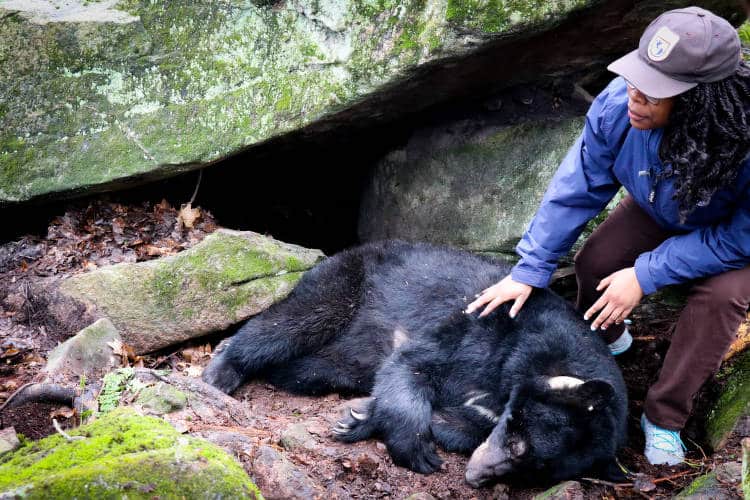
A scientist checks on a sleeping bear.
Whatever you want to call it, all species of bears in North America can exhibit a change in behavior from one season to the next. The differences come in more with where you are on the globe rather than which species you’re dealing with.
For instance, black bears in Mexico have a much shorter period of hibernating than, say, a grizzly in Montana. Both of them may have a den and spend a lot of time in it, but excursions for regular feeding are going to be easy for the black bear.
What About Polar Bears?
Polar bears are the general exception to hibernation behavior in North American bears.
Pregnant females will make a den and spend most of the winter in it, but her body temperature drop is minimal compared to other species. Males aren’t known to hibernate during the winter at all, though researchers once thought they may have a “summer hibernation”. Since land-based food sources are depleted during the warmer months in the Arctic circle, the theory was that a seasonal sluggishness would make sense. Those claims haven’t found a solid footing, but it drives home an important take-away.
When it comes down to the nuts and bolts of hibernation, bears will do what they need to do to survive. That depends on where they live, the climate and how it’s changed, and food availability.
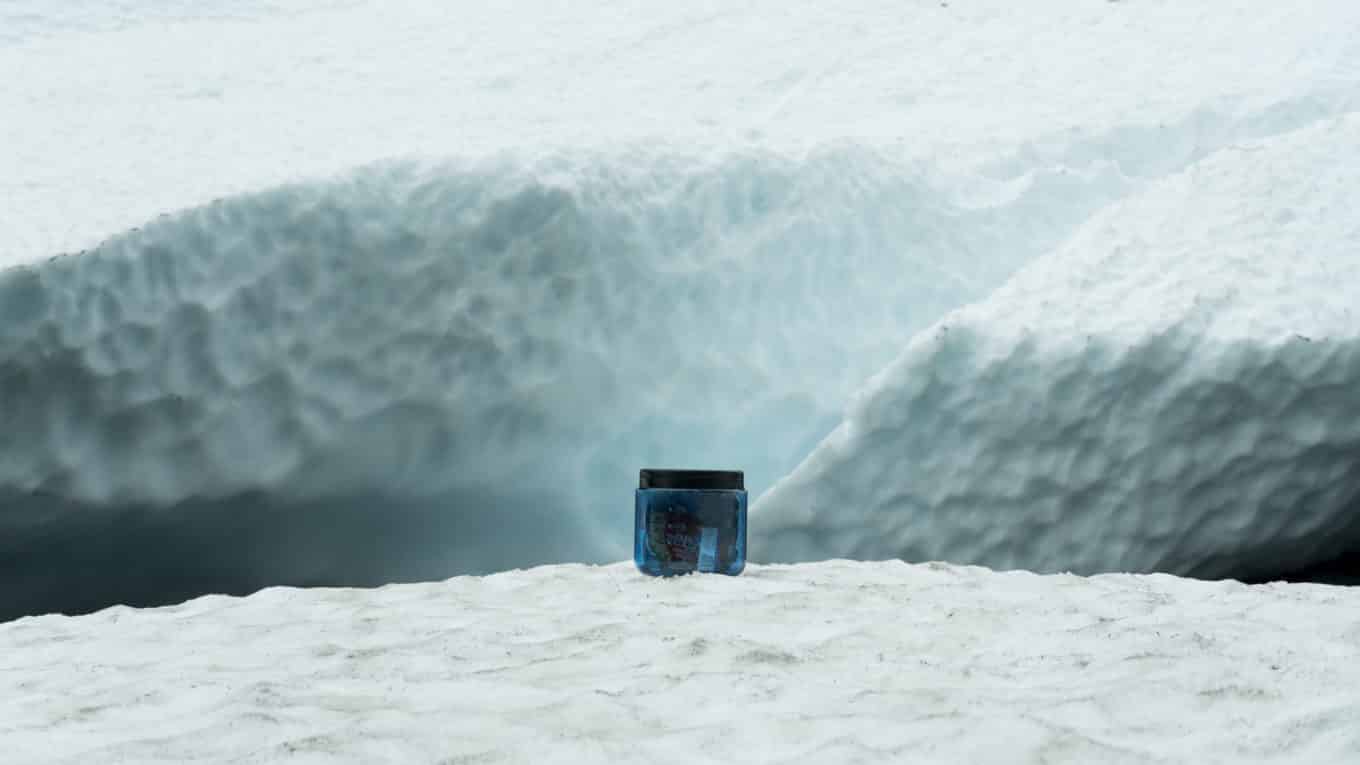
When Do Black Bears Hibernate?
For black bears, hibernation begins when temperatures drop and food starts to dry up. That will be sooner in the northern states!
In your area, consider the natural food sources available to a black bear. All summer long, they’ve been gorging on berries, roots, and fish from flowing streams.
Come fall, new food sources arrive. Nuts and fruit like persimmons and apples ripen. As trees begin dropping walnuts, pecans, acorns, and fruit, bears will use these to round out a season of building body fat.
A general rule-of-thumb to set your expectations would be that late September and through October would be the final foraging season. Late in the fall, November through December, is when black bears start shuffling off to start the long snooze. Pregnant females will den the earliest to prepare for a mid-winter birth.
Males will emerge first, as early as February if it’s unseasonably warm. If a female birthed a litter of cubs they’ll stay hidden longer to allow them to mature before leaving the den.
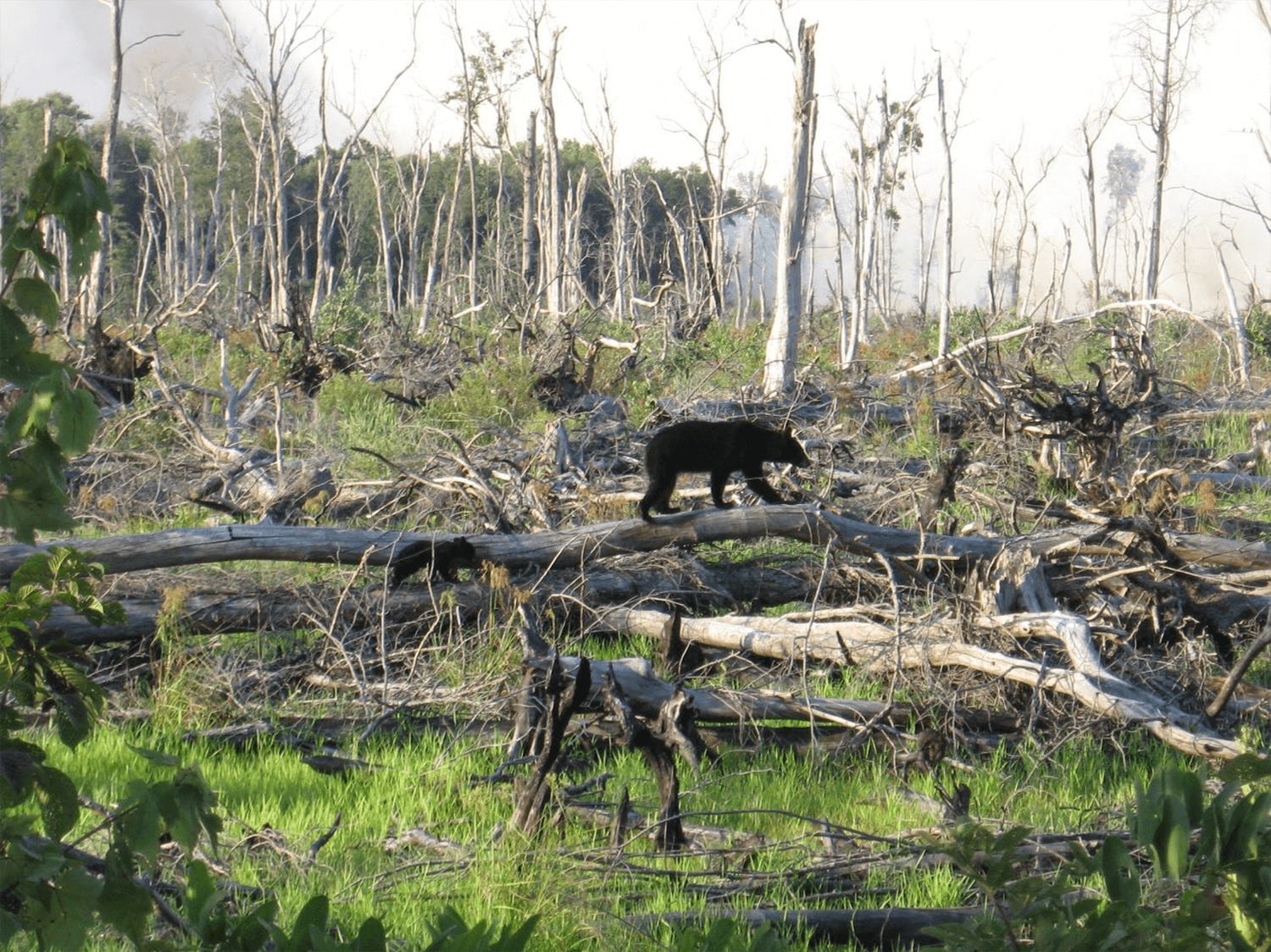
A bear and cub in the Great Dismal Swamp – Maddie List, USFWS
When do Grizzly Bears Hibernate?
Grizzly hibernation habits reflect those of their smaller relatives. They spend the summer plumping up on all the seasonal goodies they can find. Mating happens in the warm summer months and females may begin a 7-month gestation period that, if all goes well, will result in cubs born in the dead of winter. Hibernation begins when food grows scarce and temperatures plummet.
Even though grizzlies live further north and typically den at higher elevations than black bears, they’ll follow a similar calendar. You can expect them to start hibernating in late November and keep to their dens for a few months.
Males will emerge first, usually in March. Mothers with new cubs stay hidden longer, usually driven out by hunger in April or May.
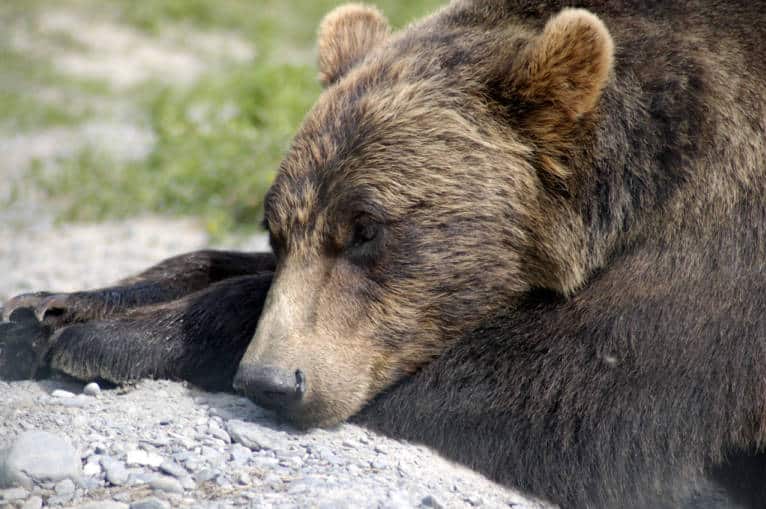
Ron Laubenstein, USFWS
How Long do Bears Hibernate?
If you count off those months we just discussed, you’d conclude that bears hibernate for around 5 months. But you have to remember that local conditions can alter bear behavior significantly.
You can’t just take a calendar date and assume you’ll have a bear-free adventure in the backwoods. Doing so could lead to you being very unprepared during an encounter with an annoyed early-riser! Keep in mind that there are a lot of factors that can bring or keep a bear out longer than expected.
Here’s a list of things that may change a bear’s hibernation habits:
1. Unseasonably warm temperatures
It’s cited that for every 1 degree celsius rise in minimum temperature bears will hibernate for 6 fewer days.
2. Food scarcity during foraging season
If they aren’t able to fatten up enough, they’re likely to be out sooner or even mid-winter to try to close the gap in their bodily needs.
3. Human disturbances to habitats
Development doesn’t stop during the winter and neither do winter activities and sports. Bears dens can be disturbed, causing them to leave in search of another.
4. Natural disasters
Severe weather may be considered a spring and summer thing, but it’s not out of the question for winter. Especially in the south, winter thunderstorms can produce tornadoes and localized flooding.
5. Food conditioning
Some bears near urban areas (such as the population around Lake Tahoe) reduce hibernation time drastically after becoming accustomed to easily accessible human food.
All of those things are gaining ground and making changes to bear behavior. In 2017, a study using GPS collar data on female black bears in the mountains surrounding Durango, Colorado showed a trend towards shorter and more broken hibernation. The conclusion was that “Increases in temperature and use of anthropogenic [human] foods additively reduce the duration of hibernation.”
Your safety measures shouldn’t change in the winter months. Remember, “hibernation” for bears isn’t a solid, deep-sleep state. They can be awakened if disturbed, so continue to practice safe food storage and proper bear country etiquette.

Does Hibernation Change Bear Behavior?
The short answer? Absolutely!
A bear’s entire year is shaped by this hibernation behavior. Survival requires that its waking months are used to acquire enough calories to build up body fat that can carry it through its dormant months. They can consume 20,000 calories during the summer!
That means that those last couple of months can lead them to become extra persistent in pursuing food. Making sure food is stored properly will help keep you safe and keep bears wild.
How Does This Help Me?
Knowing how hibernation changes a bear’s needs and behavior can help you adventure safely in bear country. The most important takeaways include…
You can’t assume that winter travel will mean you have no chance of a bear encounter.
Keeping food safe is a year-round endeavor since bear’s are always looking to chow down, whether that’s to prepare for or recover from hibernation.
Keeping wild bears wild is an important responsibility every person shoulders when they decide to recreate in bear country.
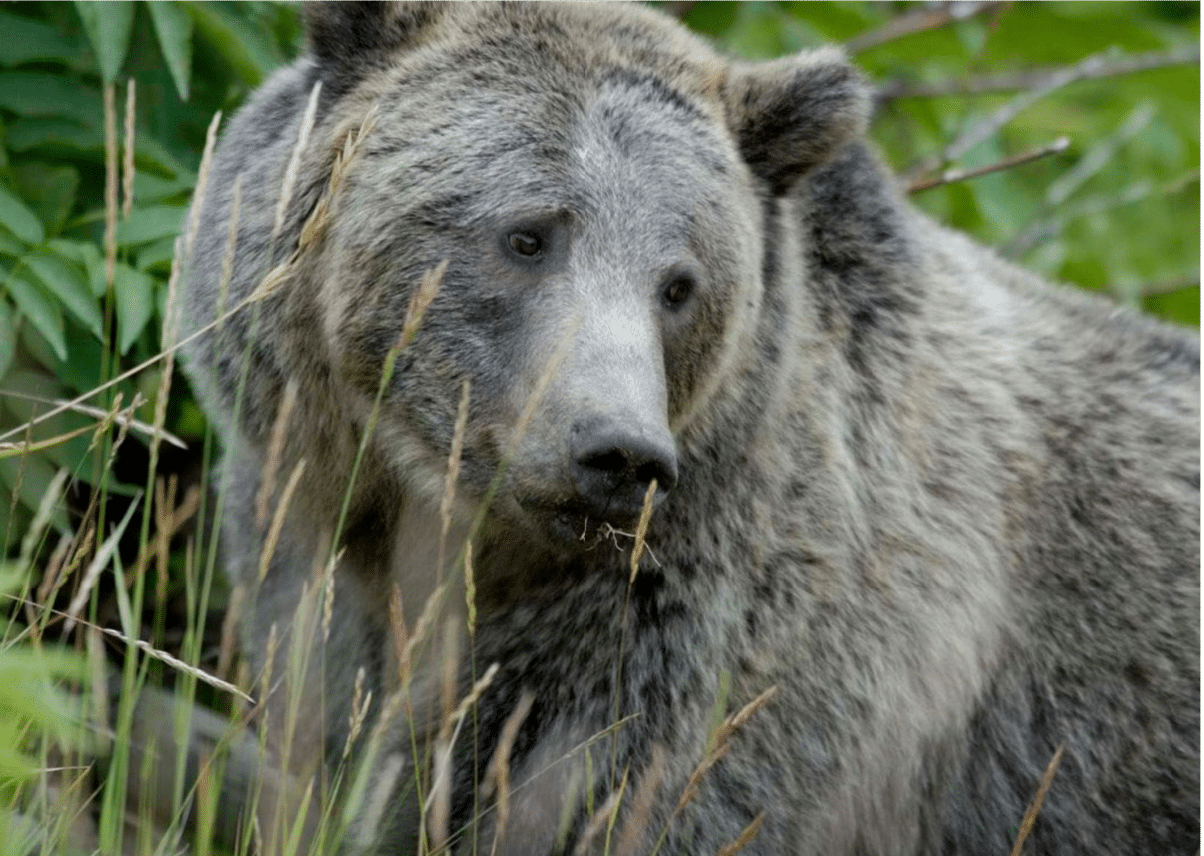
A happy and wild Yellowstone Grizzly – Terry Tollefsbol, NPS
Author Profile

Jessica Cockroft
Jess merges her passion for words and an insatiable longing for adventure as an outdoor freelance content writer and marketer. When she’s not busy stringing words together you’ll probably find her planning another camping trip for her crew of kids or taking care of the homestead. You can find her on LinkedIn and Instagram, as well as on her own website.




